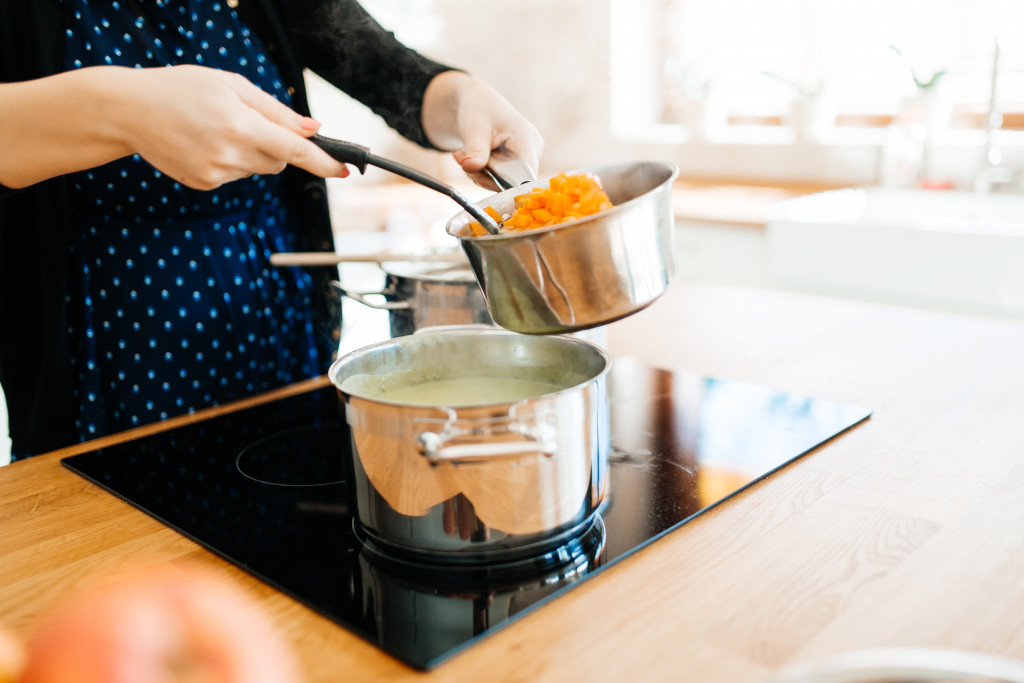While people stayed mostly home during the pandemic, juggling remote work tasks with the supervision of children doing distance learning, they relied a lot on home deliveries for cooked meals. According to aggregated research, revenues from food deliveries in the U.S. grew from $22 billion in 2019 to $26.5 billion in 2020.
Because of the popularity of food deliveries, some companies set up ghost kitchens. These businesses are different from restaurants because they operate only for food deliveries with no on-site dining facilities. This means huge savings in overhead costs. They team up with online apps for ordering and delivery services. One kitchen can collaborate with several services for a wider reach, as long as production capacity can accommodate the load of orders.
There are existing companies that offer full-service kitchens to businesses complete with an ordering and delivery service. It is like getting a franchise because everything is ready to run. They have different types and sizes of kitchens to choose from. Starting capital can run high, though, from $30,000.
Kitchen Microenterprise Laws
For those who have little capital, there are still many legal restrictions for the selling of food prepared at home. Current laws vary by state but are mostly restrictive. Commonly allowed are low-risk food such as baked bread and cookies, preserves, jams, chips, granola, popcorn, coffee, and tea blends. Entrepreneurs can only sell directly to the buyer or at farmers’ markets, charitable functions, or bake sales.
There are now opportunities for home cooks to start a home delivery business for a wider range of food from their own kitchens at very low costs, though. Forbes reports that in March this year, Utah passed the Microenterprise Home Kitchen Act which legalizes selling any type of food from a home kitchen. Utah already had previous laws allowing the selling of homemade food as long as these do not contain raw milk or certain types of meat. The new law removes these restrictions.
The law does not allow customers to eat on the premises but allows food pick-ups and deliveries. There is no limit in the volume of sales and the number of employees a home kitchen can hire. Local health departments are mandated to process permits for these businesses. The costs for all inspection fees, permits, and liability insurance are below $1,000. Adding kitchen equipment such as stainless steel food service carts for additional food prepping surfaces does not cost much.
California already had a microenterprise home kitchen law since 2018 but each country must opt-in and pass its own ordinances to regulate home kitchens. The law has not succeeded much because only two counties opted in and issued permits. A third county is in a six-month trial period for only 10 home kitchens. Four other counties opted in but have not issued permits. California also has an annual gross sales cap of $50,000 per home kitchen and allows only one employee. Still, as of April 2021, Riverside County has more than 110 microenterprise home kitchens in operation.
Harvard University’s Center for Health Law and Policy Innovation (CHLPI) reports that as of April 2021, 29 states introduced 44 bills that either expand their existing cottage food laws or legalize microenterprise home kitchens. Many of the bills also raise or remove the sales cap for homecooked food. More than a third of the bills allow the selling of homecooked food online, by email, or over the phone. These developments are very encouraging for people who love to cook and are looking for an affordable business to set up.
Make Money From Your Kitchen

It is time to get into the kitchen and whip up your specialties. There are companies that accommodate small home kitchens and provide ordering and delivery services.
To prepare for making a business of homecooked food, you must accurately measure your ingredients and tally the cost of each order. Apart from the cost of ingredients, you must include the cost of power, depreciation of your kitchen equipment, the cost of your labor, and, of course, the cost of the packaging. Once you have an agreement with an ordering and delivery service, you must also consider this cost.
Ensure that your packaging is not only attractive but, most importantly, safe. It must be spill-proof. It is best to also use microwave-safe containers so that your customers need not transfer the food before heating. If your container is not microwave-safe, put a large label indicating this on the cover.
Do not start with a large menu. Focus on what you do best so that your product shines above the competition. This is also more convenient for preparation and cost-efficient in purchasing ingredients. Most of all, focus on what you enjoy most creating.
